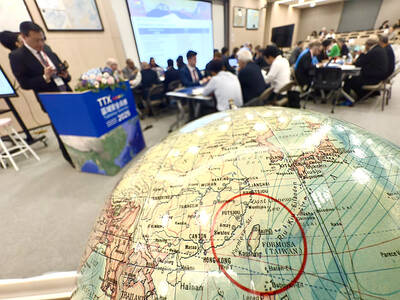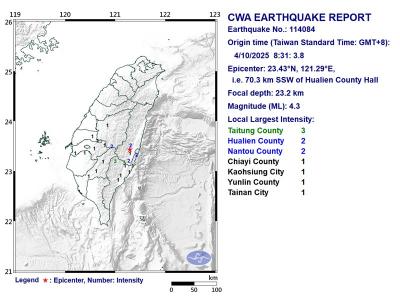Former president Lee Teng-hui (李登輝) endorsed Japan’s move to affirm its right to “collective self-defense,” saying it will strengthen the US-Japan strategic alliance and help stabilize the region.
The new rule was passed by the Cabinet led by Japanese Prime Minister Shinzo Abe on Tuesday and approves a reinterpretation of Article 9 in the constitution that allows the nation’s military to come to the aid of allies if they come under attack, even if Japan itself is not facing a foreign threat of force.
“The right to ‘collective self-defense’ is important to Japan and the US. Although the US has a powerful military, the nation is facing economic difficulty. Now that Japan is willing to exercise that right, the US will be more assured. It will also strengthen the US-Japan strategic alliance,” Lee said.
The former president said follow-up developments would see countries like the Philippines, Australia and India having closer military ties with Japan, and that Taiwan is to be affected as well.
Lee said the changed environment would lead to more restrained behavior by China, which behaves aggressively toward weaker nations amid its economic growth, such as by always bringing up [its claims on] the Diaoyutai Islands [釣魚台, or Senkaku Islands in Japan] and maritime disputes with Vietnam and the Philippines.
“After Japan’s approving the exercise of its right to collective self-defense, China will become less likely to make aggressive moves, so the entire Asian region will have more stability,” Lee said after attending a youth leadership training workshop.
“Japan should take this opportunity to amend Article 9 in its constitution. I also hope to see Japan make serious efforts to draft its own ‘Taiwan Relations Act,’ so Taiwan can have more stability,” he said.

Taiwan is stepping up plans to create self-sufficient supply chains for combat drones and increase foreign orders from the US to counter China’s numerical superiority, a defense official said on Saturday. Commenting on condition of anonymity, the official said the nation’s armed forces are in agreement with US Admiral Samuel Paparo’s assessment that Taiwan’s military must be prepared to turn the nation’s waters into a “hellscape” for the Chinese People’s Liberation Army (PLA). Paparo, the commander of the US Indo-Pacific Command, reiterated the concept during a Congressional hearing in Washington on Wednesday. He first coined the term in a security conference last

DEFENSE: The National Security Bureau promised to expand communication and intelligence cooperation with global partners and enhance its strategic analytical skills China has not only increased military exercises and “gray zone” tactics against Taiwan this year, but also continues to recruit military personnel for espionage, the National Security Bureau (NSB) said yesterday in a report to the Legislative Yuan. The bureau submitted the report ahead of NSB Director-General Tsai Ming-yen’s (蔡明彥) appearance before the Foreign and National Defense Committee today. Last year, the Chinese People’s Liberation Army (PLA) conducted “Joint Sword-2024A and B” military exercises targeting Taiwan and carried out 40 combat readiness patrols, the bureau said. In addition, Chinese military aircraft entered Taiwan’s airspace 3,070 times last year, up about

A magnitude 4.3 earthquake struck eastern Taiwan's Hualien County at 8:31am today, according to the Central Weather Administration (CWA). The epicenter of the temblor was located in Hualien County, about 70.3 kilometers south southwest of Hualien County Hall, at a depth of 23.2km, according to the administration. There were no immediate reports of damage resulting from the quake. The earthquake's intensity, which gauges the actual effect of a temblor, was highest in Taitung County, where it measured 3 on Taiwan's 7-tier intensity scale. The quake also measured an intensity of 2 in Hualien and Nantou counties, the CWA said.

The Overseas Community Affairs Council (OCAC) yesterday announced a fundraising campaign to support survivors of the magnitude 7.7 earthquake that struck Myanmar on March 28, with two prayer events scheduled in Taipei and Taichung later this week. “While initial rescue operations have concluded [in Myanmar], many survivors are now facing increasingly difficult living conditions,” OCAC Minister Hsu Chia-ching (徐佳青) told a news conference in Taipei. The fundraising campaign, which runs through May 31, is focused on supporting the reconstruction of damaged overseas compatriot schools, assisting students from Myanmar in Taiwan, and providing essential items, such as drinking water, food and medical supplies,